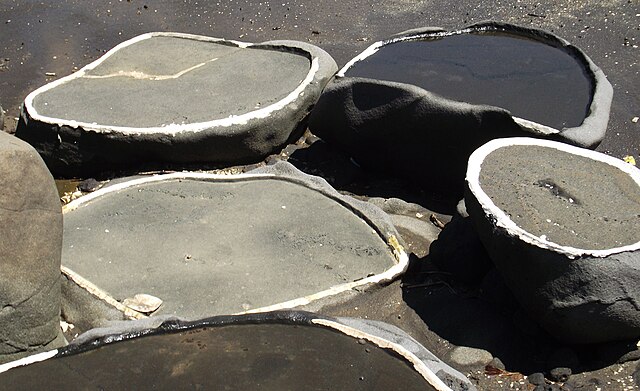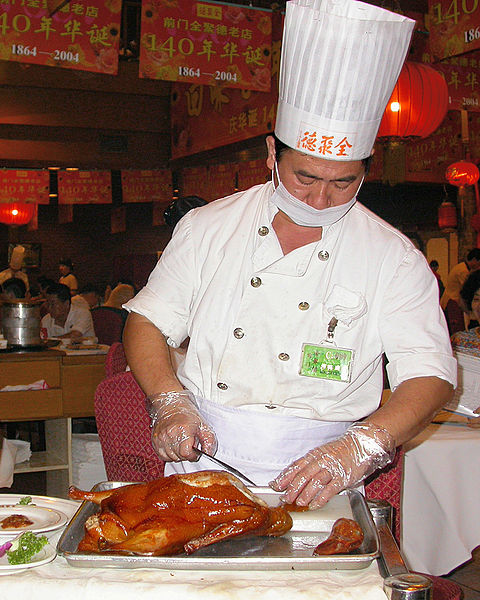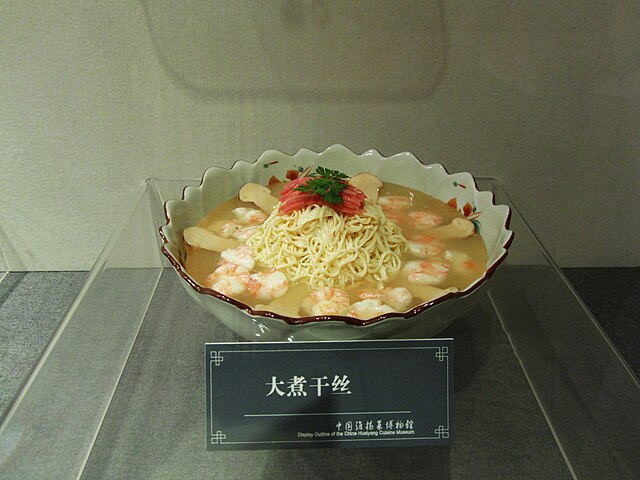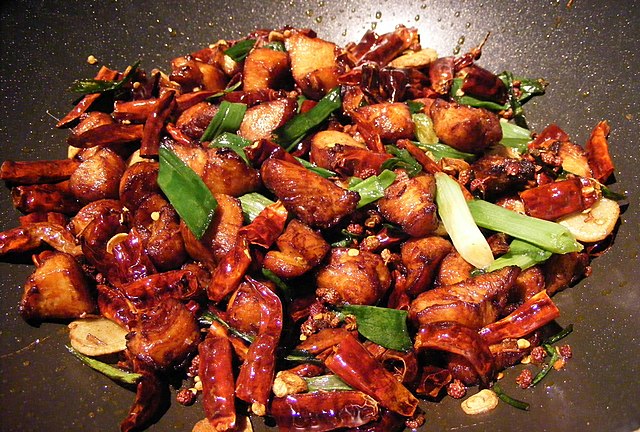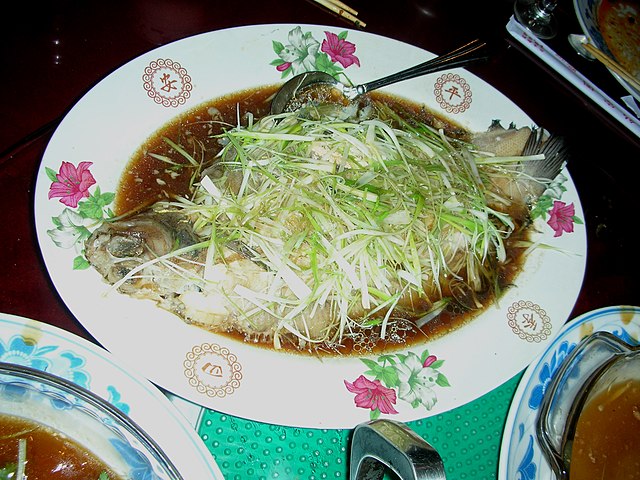Salt, salt production, and salt taxes played key roles in Chinese history, economic development, and relations between state and society. The lure of salt profits led to technological innovation and new ways to organize capital. Debate over government salt policies brought forth conflicting attitudes toward the nature of government, private wealth, the relation between the rich and the poor, while the administration of these salt policies was a practical test of a government's competence.
Lake salt from Jilantai (Inner Mongolia, China)
Aquaculture and Salt Production Bohai Bay (Seen from space 1979)
Salt evaporation pans, Yangpu Ancient Salt Field, Hainan Island
Industrial Salt Evaporators at Zigong
Chinese cuisine comprises cuisines originating from China, as well as from Chinese people from other parts of the world. Because of the Chinese diaspora and historical power of the country, Chinese cuisine has profoundly influenced many other cuisines in Asia and beyond, with modifications made to cater to local palates. Chinese food staples such as rice, soy sauce, noodles, tea, chili oil, and tofu, and utensils such as chopsticks and the wok, can now be found worldwide.
A Quanjude cook is slicing Peking roast duck. Peking duck is eaten by rolling pieces of duck with scallion, cucumber and sweet bean sauce using steamed pancakes.
Dàzhǔ gānsī is a typical soup dish of Huaiyang cuisine. It is made of finely sliced dried tofu, chicken, ham and bamboo shoot, and the ingredients need to be braised with shrimp in chicken soup. It was highly praised by the Qianlong emperor.
Làzǐ Jī, stir-fried chicken with chili and Sichuan pepper in Sichuan style
Steamed whole perch with roe inside. Sliced ginger and spring onion is usually spread on top.



